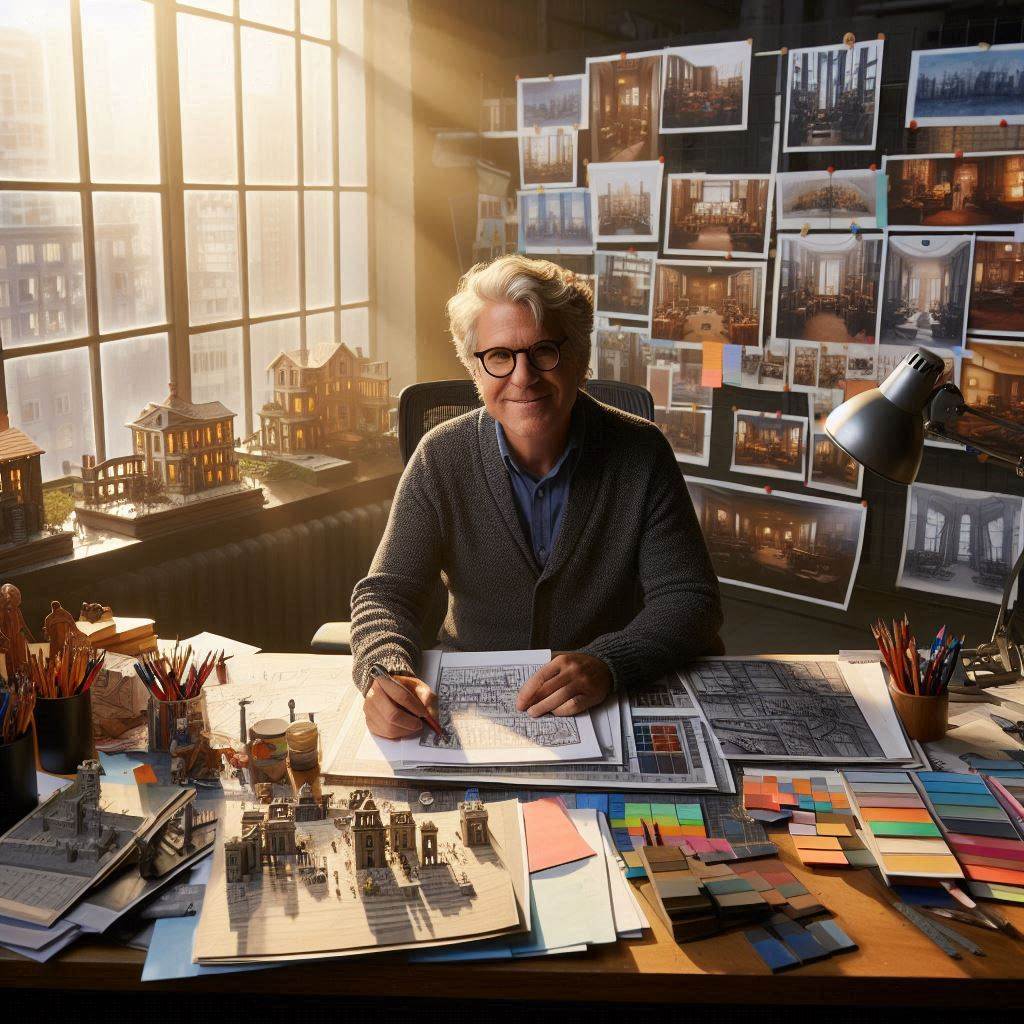Introduction
An interactive media designer is responsible for creating dynamic and engaging digital experiences that captivate users.
By blending creativity with technology, they develop interactive websites, applications, and multimedia projects that encourage user participation and engagement.
In an era where digital platforms dominate, interactive media designers play a pivotal role in shaping how people interact with content online.
Interactive media designers enhance user experiences by ensuring that digital platforms are not only visually appealing but also intuitive and functional.
Their work involves a deep understanding of user behavior, visual design principles, and emerging technologies.
They are tasked with translating a brand or message into an immersive, user-centered experience that fosters connection and engagement.
From designing interactive interfaces to implementing user feedback in real time, interactive media designers bridge the gap between design and technology.
As a result, their contributions are critical to businesses, entertainment, education, and any field where digital interaction is key.
Responsibilities of an Interactive Media Designer
Creating engaging and interactive user experiences
As an interactive media designer, you play a crucial role in shaping the way users interact with digital content.
Your responsibilities extend far beyond just creating visually appealing designs.
You are tasked with creating user-friendly experiences that captivate and engage audiences.
One of the key responsibilities of an interactive media designer is to create engaging and interactive user experiences.
This involves understanding the needs and preferences of the target audience and designing interfaces that are intuitive and easy to navigate.
Incorporate animations, interactive buttons, and multimedia content to enhance user engagement and create a memorable experience.
Designing websites, mobile apps, and other digital media platforms.
In addition to creating user experiences, interactive media designers are also responsible for designing websites, mobile apps, and other digital media platforms.
This involves conceptualizing and designing the layout, visual elements, and interactive features of these platforms.
You must ensure that the design is both aesthetically pleasing and functional, taking into account factors such as user accessibility and device compatibility.
Collaborating with clients and team members to achieve project goals.
Collaboration is another essential aspect of an interactive media designer’s role.
You will often work closely with clients and team members to understand project requirements, brainstorm ideas, and devise creative solutions.
By collaborating with others, you can gain valuable insights, feedback, and perspectives that can help improve the overall design and user experience.
Furthermore, interactive media designers must stay up-to-date with the latest design trends, technologies, and best practices.
This requires continuous learning and experimentation to ensure that your designs remain relevant and competitive in the ever-evolving digital landscape.
By staying informed and adaptive, you can create innovative and impactful solutions that meet the needs of both clients and users.
Ultimately, the role of an interactive media designer is dynamic and multifaceted.
It requires a combination of creativity, technical skills, and collaboration to deliver compelling and effective digital experiences.
By embracing these responsibilities and challenges, you can make a meaningful impact in the field of interactive media design.
Read: Best Tools and Software for Character Designers
Skills Required for Success
When it comes to being a successful interactive media designer, there are certain skills that are essential to possess.
These skills help in creating engaging and user-friendly designs that effectively communicate the intended message.
Here are some key skills required for success in this field:
Proficiency in Graphic Design and User Interface (UI) Design
One of the most important skills for an interactive media designer is proficiency in graphic design and user interface (UI) design.
This involves creating visually appealing designs that are intuitive and user-friendly.
Graphic design skills are essential for creating visually compelling layouts, images, and typography.
On the other hand, UI design focuses on creating interfaces that are easy to navigate and enhance the overall user experience.
An effective interactive media designer masters design principles, color theory, typography, and layout techniques.
They create compelling and impactful designs by applying these skills.
Knowledge of Web Development Tools and Programming Languages
In addition to design skills, an interactive media designer should also have knowledge of web development tools and programming languages.
This includes familiarity with software such as Adobe Creative Suite, Sketch, and Figma, as well as programming languages like HTML, CSS, JavaScript, and jQuery.
Understanding how websites are built and how they function is crucial for creating designs that are not only visually appealing but also functional and interactive.
An interactive media designer masters web development tools and programming languages to optimize designs for the web.
This ensures seamless user experiences.
Strong Communication and Problem-Solving Skills
Communication and problem-solving skills are vital for an interactive media designer to succeed in this field.
Effective communication is essential for working with clients, team members, and other stakeholders to understand their needs and requirements.
Clear communication helps ensure that the final design meets the expectations and objectives of the project.
Problem-solving skills are also crucial for addressing design challenges and coming up with creative solutions.
An interactive media designer should be able to think critically, adapt to changes, and troubleshoot issues that may arise during the design process.
Strong communication and problem-solving skills allow an interactive media designer to collaborate effectively with others.
They deliver high-quality designs that align with the project’s goals.
Read: Ceramic Art: From Hobby to Professional Career
Educational Background and Training
Interactive media designers create digital experiences by blending technology and design to engage users.
They play a crucial role in shaping the way we interact with websites, apps, games, and other digital platforms.
To become an interactive media designer, individuals typically need to have a strong educational background and relevant training in the field.
Here are some key aspects of the educational background and training required for this role.
Degree in graphic design, web design, or related field
Most interactive media designers hold a degree in graphic design, web design, or a related field.
These programs provide students with a solid foundation in design principles, technical skills, and creative thinking.
Courses in areas such as user experience (UX) design, interactive design, and multimedia production are often part of the curriculum.
On-the-job training or internships to gain experience
While formal education is important, hands-on experience is also crucial for aspiring interactive media designers.
Many professionals start their careers by taking on internships or entry-level positions to gain practical skills and build their portfolios.
On-the-job training allows designers to work on real projects, collaborate with team members, and learn from industry experts.
Continuous learning to stay updated on industry trends and technology advancements
The field of interactive media design is constantly evolving, with new technologies and trends emerging regularly.
To stay competitive in the industry, designers need to engage in continuous learning.
This can involve attending workshops, taking online courses, participating in industry conferences, and exploring new tools and software.
By staying updated on the latest developments, designers can enhance their skills, expand their knowledge, and adapt to changing industry demands.
In fact, a combination of formal education, practical experience, and ongoing learning is essential for a successful career as an interactive media designer.
By obtaining the right educational background and training, designers can develop the skills and knowledge needed to create innovative and engaging digital experiences.
Read: How to Create Memorable Characters: Pro Tips

Software and Tools Used in Interactive Media Design
In the field of interactive media design, professionals rely on a variety of software and tools to create engaging and interactive experiences for users.
These tools play a crucial role in the design process, allowing designers to bring their creative vision to life.
Here are some of the most commonly used software and tools in interactive media design:
Adobe Creative Suite
Adobe Creative Suite is a collection of design software that includes popular programs such as Photoshop, Illustrator, InDesign, and more.
Designers use these tools to create graphics, illustrations, and layouts for websites, mobile apps, and other digital projects.
Photoshop, for example, is used for editing photos and creating visual effects, while Illustrator is used for creating vector graphics and illustrations.
Prototyping Tools
Prototyping tools like Sketch and Adobe XD are essential for designing interactive prototypes of websites and mobile apps.
These tools allow designers to create interactive wireframes and mockups that demonstrate the functionality of a digital product.
By using prototyping tools, designers can test different design ideas and interactions before moving on to the development phase.
Coding Languages
Understanding coding languages such as HTML, CSS, and JavaScript is crucial for interactive media designers.
HTML is used to structure the content of a web page, CSS is used to style the layout and design, and JavaScript is used to add interactivity and functionality to a website.
Designers often collaborate with developers to bring their designs to life using these coding languages.
Overall, the software and tools used in interactive media design play a critical role in shaping the digital experiences that we interact with every day.
By mastering these tools, designers can create engaging and innovative designs that captivate users and enhance their online experiences.
Read: Ceramic Art Exhibitions to Visit in 2024
Transform Your Career Today
Unlock a personalized career strategy that drives real results. Get tailored advice and a roadmap designed just for you.
Start NowCareer Opportunities and Growth
The field of design offers diverse career opportunities that cater to various interests and skills.
Here, we explore potential roles, industry applications, and the prospect of freelancing or entrepreneurship.
Potential Roles
- UX Designer: UX designers focus on creating user-friendly experiences. They research user needs, conduct usability testing, and design intuitive interfaces.
- UI Developer: UI developers are responsible for the visual aspects of a website or application.
- Creative Director: A creative director oversees the creative process and guides a design team.
Industry Applications
Design professionals can find opportunities across various industries, including:
- Advertising: Designers create compelling visuals for marketing campaigns, advertisements, and promotional materials.
- E-commerce: In the e-commerce sector, designers work on websites, product pages, and online marketing assets.
- Entertainment: The entertainment industry relies on designers for film, television, and video game production.
Freelance and Entrepreneurial Opportunities
In addition to traditional employment, design professionals can explore freelance opportunities or start their own design agencies.
Freelancing offers flexibility and the chance to work with diverse clients.
It allows designers to choose projects that align with their interests.
Starting a design agency can also be a rewarding path.
Entrepreneurs can build a brand, hire a team, and expand their service offerings.
Success in this area requires strong business acumen, marketing skills, and a solid portfolio.
The design field is dynamic and filled with opportunities for growth.
With roles ranging from UX designers to creative directors, professionals can find their niche in various industries.
The possibility of freelancing or launching a design agency further enhances career prospects.
As the demand for skilled designers continues to rise, now is an excellent time to explore these career opportunities.
Challenges Faced by Interactive Media Designers
As interactive media designers, we face a variety of challenges that require us to constantly adapt and improve our skills.
Here are some of the common challenges faced by interactive media designers:
Meeting Tight Deadlines and Client Expectations in Interactive Media Design
One of the biggest challenges faced by interactive media designers is the pressure to deliver projects on time while meeting client expectations.
In a fast-paced digital environment, clients often impose strict deadlines, which can create significant stress for designers.
Balancing the demands of quality design with the need for efficiency is crucial in this competitive landscape.
To successfully navigate tight deadlines, designers must develop strong project management skills.
This includes prioritizing tasks, setting realistic timelines, and effectively allocating resources.
A clear project scope and timeline help set expectations for designers and clients.
This approach reduces last-minute changes that can derail progress.
Keeping up with constantly evolving technology
The interactive media design industry evolves rapidly.
Designers must stay updated on the latest trends, tools, and methodologies.
As new software, programming languages, and design frameworks emerge, designers must continually adapt to remain competitive and relevant in their field.
This constant evolution presents both challenges and opportunities for creative professionals.
To keep pace with changing technology, interactive media designers should prioritize ongoing education and professional development.
This can include enrolling in online courses, attending workshops, and participating in industry conferences.
Engaging with the design community through networking events or online forums can also provide valuable insights into emerging trends and best practices.
Balancing creativity with usability and functionality
Another challenge for interactive media designers is finding the right balance between creativity and functionality.
While creativity is essential in creating visually appealing designs, it is also important to ensure that these designs are user-friendly and functional.
Generally, being an interactive media designer requires the ability to juggle multiple responsibilities and challenges.
Designers can overcome challenges by staying current with technology.
They can manage time effectively and balance creativity with usability.
This approach allows them to create innovative and engaging designs.
Uncover the Details: How to Design for Different Screen Sizes and Devices
Salary and Job Outlook
Interactive media designers play a crucial role in today’s digital world, combining creativity and technical skills to develop engaging experiences for users.
As the demand for interactive media continues to grow, so do the opportunities for talented designers in this field.
Median Salary for Interactive Media Designers in the U.S.
The median salary for interactive media designers in the United States is approximately $65,000 per year.
This figure serves as a general benchmark.
However, actual salaries can vary significantly.
Several factors influence salaries, including experience, education, location, and the specific industry.
Experience plays a crucial role in determining salary levels.
Entry-level designers typically earn between $45,000 and $55,000.
Designers with several years of experience or specialized skills can earn $75,000 to $90,000 or more.
Senior positions, such as creative directors or design leads, often command even higher salaries, reflecting their advanced expertise and leadership responsibilities.
Projected Job Growth Rate for the Industry
The job outlook for interactive media designers is promising, with a projected growth rate of 4% from 2019 to 2029.
This growth rate aligns with the average for all occupations, indicating a steady demand for skilled designers in this dynamic field.
As technology continues to advance and digital platforms become increasingly integral to business operations and consumer interactions, the need for interactive media designers is expected to remain strong.
Several factors contribute to this positive job outlook.
Firstly, the rise of e-commerce and digital marketing has created a heightened demand for engaging online experiences.
Businesses are increasingly seeking interactive media designers to develop websites and applications that capture user attention and drive engagement.
This trend is likely to continue as more companies recognize the importance of strong online presences.
Factors that May Influence Salary
Several factors can influence the salary of an interactive media designer.
One such factor is experience ‘ designers with several years of experience in the industry may command higher salaries than those who are just starting out.
Additionally, the location of the designer can also impact their salary, with designers in major metropolitan areas typically earning more than those in smaller cities or rural areas.
In essence, interactive media design is a dynamic and rewarding field with a promising job outlook.
With the right skills and experience, designers in this industry can enjoy a competitive salary and ample opportunities for professional growth.
Conclusion
Interactive media designers play a crucial role in crafting engaging and user-friendly digital experiences.
Their design, technology, and user experience expertise bridges the gap between users and technology.
They create interfaces that are visually appealing, functional, and intuitive.
For aspiring designers, pursuing a career in interactive media design can be both rewarding and challenging.
This field allows you to work on innovative projects.
You can collaborate with talented individuals.
Your efforts can significantly impact how people interact with digital platforms.
The creative process involved in designing interactive experiences allows for self-expression and creativity while solving real-world problems.
Looking ahead, the future of interactive media design is promising.
With rapid advancements in technology and the growing demand for interactive content, the role of designers will continue to evolve.
Emerging technologies like augmented reality (AR), virtual reality (VR), and artificial intelligence (AI) shape new design paradigms.
Designers must adapt and innovate continuously to keep up with these changes.
[E-Books for Sale]
The Big Book of 500 High-Paying Jobs in America: Unlock Your Earning Potential
$19.99 • 500 High-Paying Jobs • 330 pages
Explore 500 high-paying jobs in America and learn how to boost your career, earn more, and achieve success!
See All 500 High-Paying Jobs of this E-Book
1001 Professions Without a Degree: High-Paying American Jobs You Can Start Now
$19.99 • 1001 Professions Without a Degree • 174 pages
Discover 1001 high-paying jobs without a degree! Unlock career tips, skills, and success strategies for just $19.99!




